Https://www.democracynow.org/2018/12/13/you_are_stealing_our_future_greta

https://www.democracynow.org/2018/12/13/you_are_stealing_our_future_greta

More Posts from Copperfingertips and Others

7 reasons why solarpunk is the most important speculative fiction movement in the last 20 years
It’s hopeful. Solarpunk doesn’t require an apocalypse. It’s a world in which humans haven’t destroyed ourselves and our environment, where we’ve pulled back just in time to stop the slow destruction of our planet. We’ve learned to use science wisely, for the betterment of ourselves and our planet. We’re no longer overlords. We’re caretakers. We’re gardeners.
Scientists are heroes again. And not just physicists and astronomers. Knowledge of biology and earth sciences matter, they’re the building blocks for a future on Earth. Scientific literacy isn’t just for academics – it’s part of daily life. People know how the things they use work, and if they don’t, they can access that information.
It’s diverse. Solarpunk is rooted in using the environment, so it looks different in different places. Alternative energy is best when specific to place (I imagine geothermal, wind, tidal, and hydroelectric energy sources are still used in certain places) so no overarching government system is needed. Communities can organize themselves, taking their own location and needs and history into account. Brazilian, Inuit, Egyptian, Pacific Northwest, and New Zealand solarpunk can all look very different, but be unified in resourceful, intentional, low impact living.
Individuality still matters. In a post-scarcity society, ingenuity and self-expression are not sacrificed on the altar of survival. With solar power there’s no reason not to go off grid, if that’s what you want to do. Communities can self-organize. You can find a community that suits you, or go live by yourself if that floats your boat.
There’s room for spirituality and science to coexist. Solarpunk is rooted in a deep understanding and reverence for natural processes. There’s room for spirituality there, be it pagan, Buddhist, Sufi, Transcendentalism – anything. There’s so much to explore, from nature worship to organized monotheistic religions, and how they interact with solarpunk.
It’s beautiful. The most common solarpunk aesthetic is art nouveau, but again there’s room for diversity, incorporating art styles from multiple cultures in respectful, non-appropriative ways. The most important aspect of solarpunk aesthetic is the melding of art and utility. The idea of intentional living is strong in art nouveau, but it’s not the only art movement with that philosophy.
We can make it happen. Now. Earthships. Permaculture. Aquaponics. Algae lighting. Compostable products that turn into fields of flowers. Buy Nothing organizations. Tiny, beautiful, efficient homes. Solar power cells you can see through. That’s all happening now. Solarpunk is within our grasp, at least on a personal level. I’m not saying there aren’t still big, ugly infrastructures devoted to unethical consumption, but we can start to tear them down. We can build a solarpunk world with stories and small changes. And small changes lead to big changes. That’s the real beauty of solarpunk. It’s not a post-apocalyptic power fantasy. It’s not a wistful daydream, or an elite future only for physicists. It’s something we can work towards right now. It’s tangible.

Six talking points to use when debunking the myth that overpopulation is the root of the environmental crisis:
1. Rates of population growth are declining: Between 1950 and 2000, the world population grew at a rate of 1.76%. However, between 2000 and 2050, the rate of growth is expected to decline to 0.77%.
2. Overpopulation is defined by numbers of people, not their behaviors: Industrialized countries, who make up only 20% of the world’s population, are responsible for 80% of the carbon dioxide build-up in the atmosphere. The United States is the worst offender, with 20 tons of carbon emission per person. Therefore, it is not the amount of people that leads to degradation, but what they are doing. Permaculture design illustrates how humans can have a positive impact on the health of our ecosystems, bringing greater health and equity.
3. Overpopulation justifies the scapegoating and human rights violations of poor people, women, people of color, and immigrant communities: Often times the subtext of “too many people” translates to too many poor people, people of color, and immigrants. This idea has been used to justify such practices as the forced sterilization of 35% of women of childbearing age in 1970′s Puerto Rico, under the control of and with funding from the US government. This is a human and reproductive rights violation.
4. Overpopulation points the finger at individuals, not systems: This lets the real culprits off the hook. When we look at the true causes of environmental destruction and poverty, it is often social, political and economic systems, not individuals. We see militaries and the toxic legacy of war, corrupt governments, and a capitalist economic system that puts profit over people and the environment.
5. Supports a degenerative mental model of scarcity: Much of this ideology was created by Thomas Robert Malthus, an 19th century English scholar. Malthus gave us the erroneous idea that the reason there is famine is because there are too many mouths to feed. This hides the reality that we have a distribution problem, not a scarcity problem. Malthus’s work has been used as the philosophical bedrock to justify many human rights violations throughout history.
6. Focusing on overpopulation prevents us from creating effective solutions and building movements for collective self determination: Permaculture teaches us that how we define a problem determines how we design solutions. How does viewing overpopulation as a root problem impact the way we think of and design solutions? What would solutions look like if we viewed people, all people, as an asset? The myth of overpopulation has lead to solutions of population control and fertility treatments, rather than overall health care and women’s rights. The more we blame humans and think we are bad and evil, the harder it is to believe in ourselves, count on each other, and build a collective movement for justice and self determination.

#TheFutureIsAccessible #TFiA
http://bonfire.com/thefutureisaccessible
[Image Description: indoors, Annie is sitting in a power chair front of an elevator wearing sunglasses, wrist/thumb braces, and a black t-shirt with text that reads, “The future is accessible”]

How to build a solar greenhouse heater using old beer cans


~ the pondering muse🌙
Did you know you can grow mushrooms to eat by feeding them plastic? Or that mushrooms evolved this capability themselves? It’s true, plastic eating fungi has been found in landfills in Pakistan and it’s so prolific that it can break down polyester polyurethane in a matter of weeks. Mushrooms are great at bioremediation, so good at it fact, that they can suck radiation and heavy metals from the soil, eat plastic, petroleum, and remove CO2.
The mini farm designed to grow these amazing plastic eating fungi is called the “Fungi Mutarium” and it allows for the cultivation of Schizophyllum commune and Pleurotus ostreatus. The steps to degrade the plastic are simple and can be found below:
- UV sterilize the materials and chambers.
- Place the plastic into a “growth sphere” an egg shaped pod of agar agar.
- Add diluted mycelium culture to the “growth spheres” within the incubator.
It’s simple isn’t it? And the end product resembles an edible food bowl or cup that you can put salad in. Research is still being done to make sure it’s 100% safe to consume and no doubt free of micro-plastic residue, but even if this doesn’t get the green light for edibility, it would be a great way to process plastics at home with our current recycling issues here in the U.S.
You can read more here.

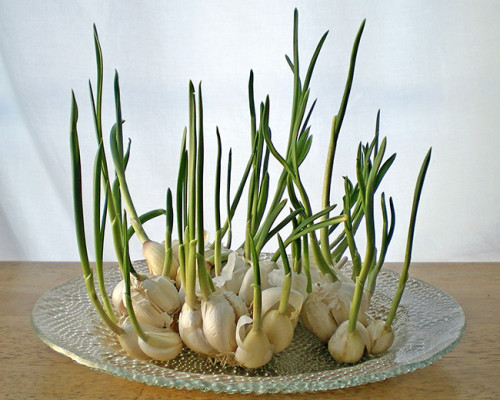


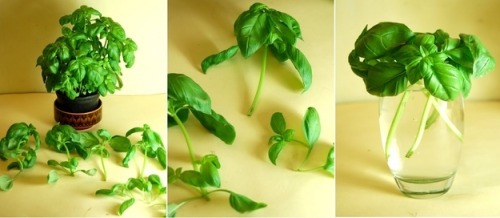

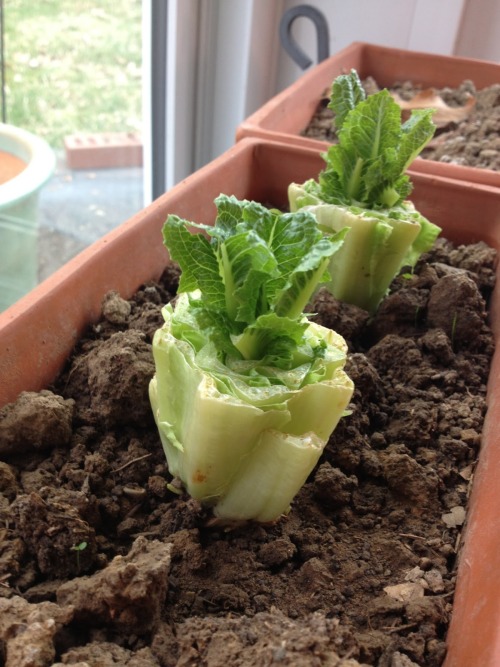
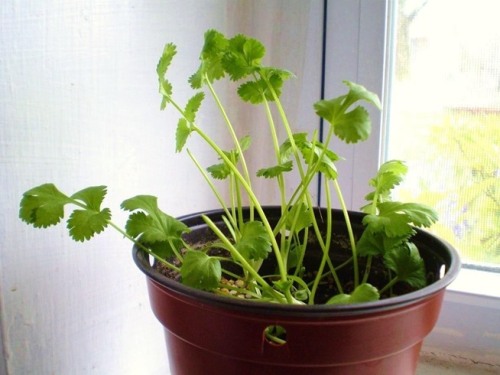
8 vegetables that you can regrow again and again.
Scallions
You can regrow scallions by leaving an inch attached to the roots and place them in a small glass with a little water in a well-lit room.
Garlic
When garlic begins to sprout, you can put them in a glass with a little water and grow garlic sprouts. The sprouts have a mild flavor than garlic and can be added to salads, pasta and other dishes.
Bok Choy
Bok choy can be regrown by placing the root end in water in a well-lit area. In 1-2 weeks , you can transplant it to a pot with soil and grow a full new head.
Carrots
Put carrot tops in a dish with a little water. Set the dish in a well-lit room or a window sill. You’ll have carrot tops to use in salads.
Basil
Put clippings from basil with 3 to 4-inch stems in a glass of water and place it in direct sunlight. When the roots are about 2 inches long, plant them in pots to and in time it will grow a full basil plant.
Celery
Cut off the base of the celery and place it in a saucer or shallow bowl of warm water in the sun. Leaves will begin to thicken and grow in the middle of the base, then transfer the celery to soil.
Romaine Lettuce
Put romaine lettuce stumps in a ½ inch of water. Re-water to keep water level at ½ inch. After a few days, roots and new leaves will appear and you can transplant it into soil.
Cilantro
The stems of cilantro will grown when placed in a glass of water. Once the roots are long enough, plant them in a pot in a well-lit room. You will have a full plant in a few months.
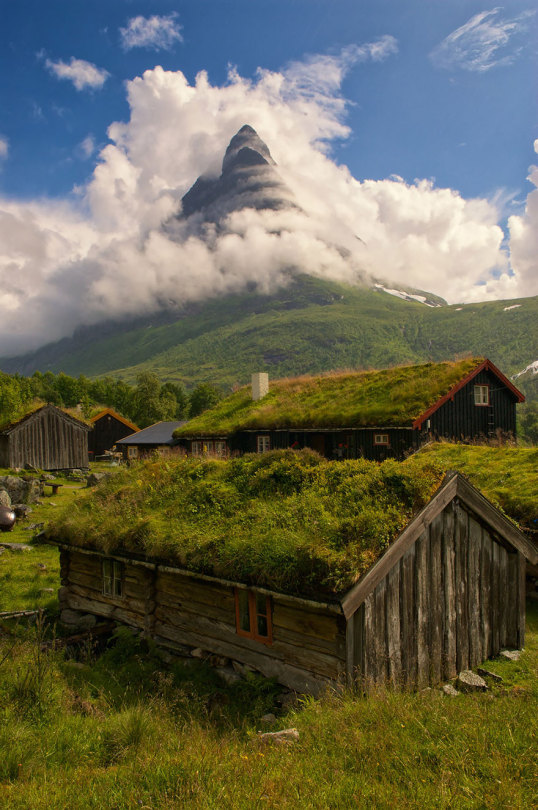
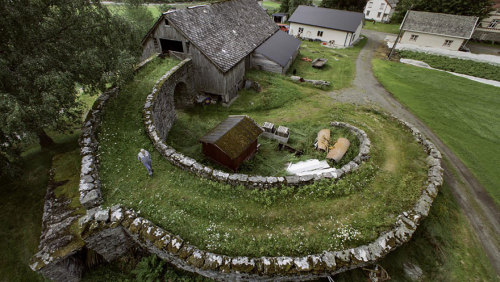
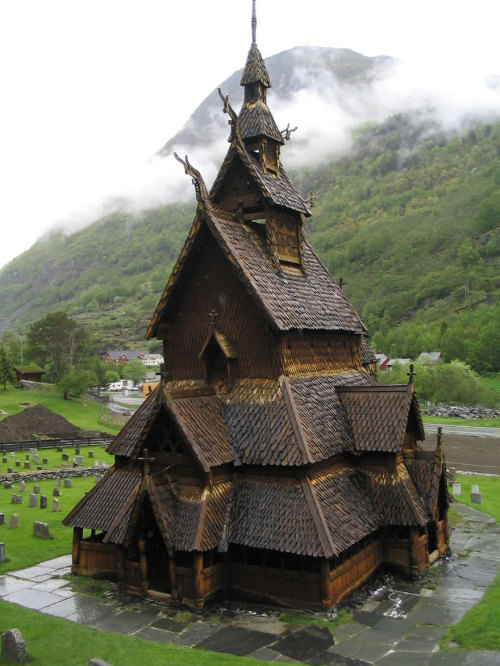

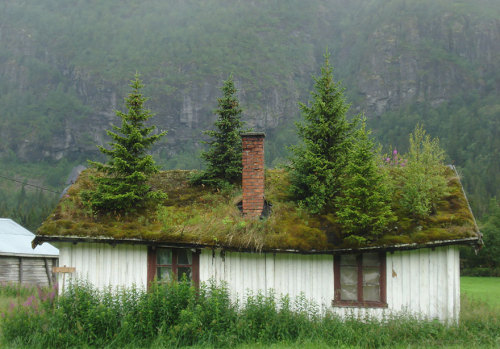
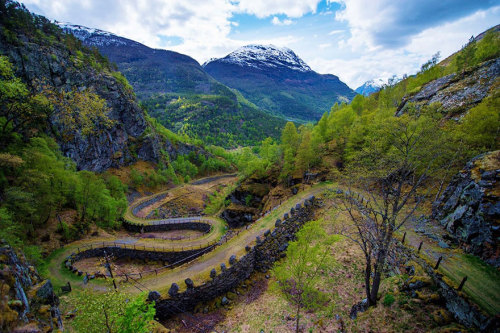
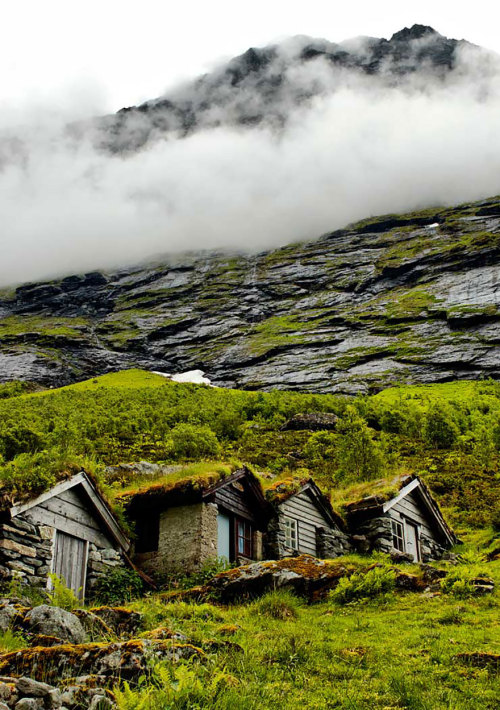
Pics Of Fairy Tale Architecture From Norway
-
 rumlicker liked this · 1 week ago
rumlicker liked this · 1 week ago -
 rewindedart liked this · 1 year ago
rewindedart liked this · 1 year ago -
 theascelozaz liked this · 1 year ago
theascelozaz liked this · 1 year ago -
 the-fangirl-who-writes-and-draws liked this · 2 years ago
the-fangirl-who-writes-and-draws liked this · 2 years ago -
 allarounddivinity reblogged this · 2 years ago
allarounddivinity reblogged this · 2 years ago -
 doubledutchoven reblogged this · 2 years ago
doubledutchoven reblogged this · 2 years ago -
 leieryx liked this · 2 years ago
leieryx liked this · 2 years ago -
 north-of-hel liked this · 2 years ago
north-of-hel liked this · 2 years ago -
 ultrakeencollectionbreadfan liked this · 2 years ago
ultrakeencollectionbreadfan liked this · 2 years ago -
 revontuliaa liked this · 2 years ago
revontuliaa liked this · 2 years ago -
 keno liked this · 3 years ago
keno liked this · 3 years ago




